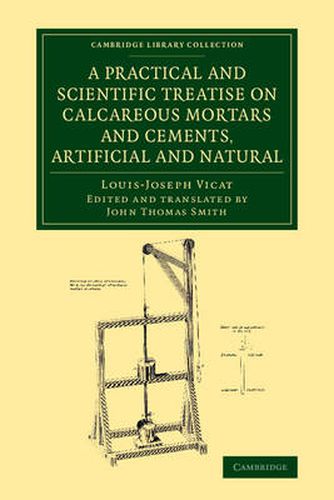Readings Newsletter
Become a Readings Member to make your shopping experience even easier.
Sign in or sign up for free!
You’re not far away from qualifying for FREE standard shipping within Australia
You’ve qualified for FREE standard shipping within Australia
The cart is loading…






Having devised an artificial cement in 1817, Louis-Joseph Vicat (1786-1861) sought to share and further the science surrounding calcareous cements. His son, Joseph Vicat, went on to found the eponymous company which became an international manufacturer of cement. This work was first published in French in 1828 and is reissued here in the English translation of 1837. Vicat addresses the subject of limes, the ingredients used to prepare mortars and cements, and how these building materials are affected by environmental conditions, such as immersion in water or exposure to damp soil and inclement weather. He also compares binding products of the time with those developed by the ancient Egyptians, Romans and Greeks. The translator, J. T. Smith, provides helpful explanatory notes and clarifies technical terms. Charles William Pasley’s Observations on Limes, Calcareous Cements, Mortars, Stuccos, and Concrete (1838) is also reissued in this series.
$9.00 standard shipping within Australia
FREE standard shipping within Australia for orders over $100.00
Express & International shipping calculated at checkout
Having devised an artificial cement in 1817, Louis-Joseph Vicat (1786-1861) sought to share and further the science surrounding calcareous cements. His son, Joseph Vicat, went on to found the eponymous company which became an international manufacturer of cement. This work was first published in French in 1828 and is reissued here in the English translation of 1837. Vicat addresses the subject of limes, the ingredients used to prepare mortars and cements, and how these building materials are affected by environmental conditions, such as immersion in water or exposure to damp soil and inclement weather. He also compares binding products of the time with those developed by the ancient Egyptians, Romans and Greeks. The translator, J. T. Smith, provides helpful explanatory notes and clarifies technical terms. Charles William Pasley’s Observations on Limes, Calcareous Cements, Mortars, Stuccos, and Concrete (1838) is also reissued in this series.